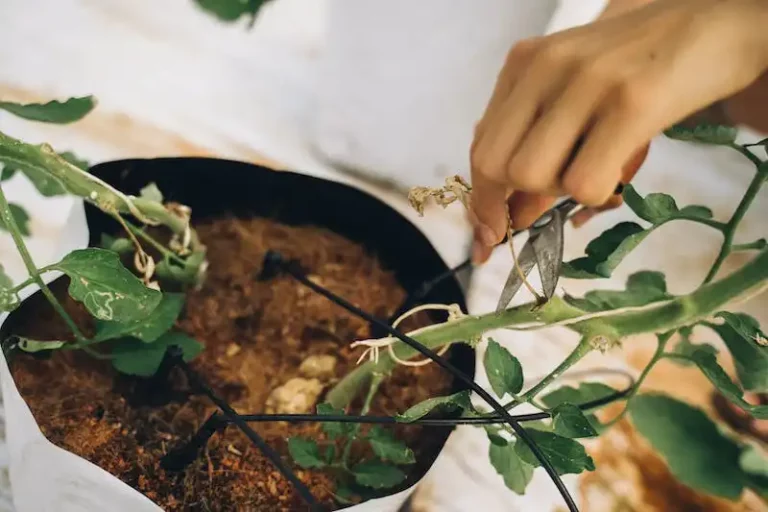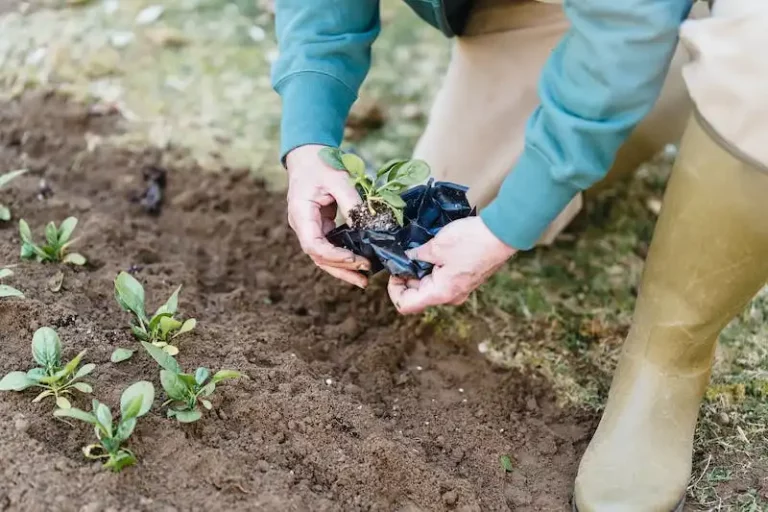MSU Extension provides easy-to-understand information and practical advice on a wide variety of gardening topics. Whether you’re a beginner or an experienced gardener, MSU Extension’s articles are designed to help you make the most of your garden.
If you’re looking for a new flavor to add to your garden, consider planting parsnips. These root vegetables have a sweet and nutty flavor, making them a tasty addition to any meal. Not only are parsnips delicious, but they’re also easy to grow. With a little bit of care and attention, your parsnips will be ready to harvest in just a few months.
Parsnips can be planted in early spring or late summer, depending on when you want to harvest them. They prefer well-drained soils and should be planted in a sunny spot. It’s important to keep the soil well-watered, as dry conditions can cause the roots to become tough and bitter.
When planting parsnips, it’s best to sow the seeds directly into the ground. Parsnips have a long germination period, often taking two to three weeks to sprout. Once they have germinated, the plants should be thinned to allow for proper growth. Leaving several inches between each plant will give them enough space to grow big and tender roots.
In colder climates, parsnips can be left in the ground over winter and dug up as needed. The cold temperatures actually enhance the flavor of the roots, making them even more delicious. If you choose to store your parsnips, be sure to keep them in a cool and dry place to prevent spoilage.
If you have any questions about growing parsnips or any other crops, MSU Extension is here to help. Their experts can provide guidance on everything from companion planting to proper fertilization techniques. Plus, their articles are filled with helpful tips and facts to ensure your garden thrives.
So why not give parsnips a try this year? With their unique flavor and easy care requirements, they’re sure to become a new favorite in your garden.
How to Grow Parsnips in Your Garden
Parsnips are a delicious root vegetable that can be grown in your garden. If you want to enjoy the sweet and nutty flavor of homegrown parsnips, here’s what you need to know about planting and growing them.
When it comes to planting parsnips, timing is key. Parsnips are a cool-season crop, so they should be planted in early spring or late summer. They grow best in loose, well-drained soil, so make sure to prepare your beds by removing any rocks or clumps of soil.
The seeds should be sown directly into the garden, about half an inch deep and an inch apart. It’s important to thin the plants once they have grown to about three inches tall, leaving about four to six inches between them. This will ensure that each plant has plenty of space to grow.
Parsnips can take a long time to grow, so be patient. They can be harvested when they have reached their mature size, typically around three to four months after planting. You can harvest them as needed, or you can leave them in the ground and harvest them all at once.
It’s recommended to harvest parsnips regularly, especially during the winter months when the ground is frozen. This helps to improve the flavor of the parsnips, as the cold weather turns some of the starches into sugar.
When harvesting parsnips, it’s best to use a garden fork or spade to gently lift them out of the ground. Be careful not to damage the roots, as this can affect their flavor.
Parsnips can be stored for several months in cool and dry conditions. They can be stored in the refrigerator or in a root cellar. Just make sure to remove any leaves before storing them.
When it comes to mulching, some gardeners find that mulching their parsnips stands can help improve the growing conditions. Mulches can help retain moisture, suppress weeds, and regulate the temperature of the soil. Some recommended mulches for parsnips include straw, leaves, or grass clippings.
Companion planting can also be beneficial for parsnips. Planting them with other root vegetables or herbs like carrots, onions, or parsley can help deter pests and improve nutrient uptake.
If you’re looking for a variety of parsnip to try, Gladiator is a popular choice. It’s known for its sweet and tender roots that have a rich flavor.
So why not give growing parsnips a try in your garden? With the right preparation, planting, and care, you can enjoy the delicious flavor of homegrown parsnips that are even better than store-bought ones.
For more information on growing parsnips, you can visit the MSU Extension website.
Recommended Parsnip Varieties
When it comes to choosing the right variety of parsnips to grow in your garden, there are several factors to consider. The first and most important factor is the care that each variety requires. Some varieties may be more tolerant of poor soil conditions or pests, while others may require more attention to ensure a successful harvest.
One popular variety that is recommended for its productivity and tender roots is the MSU Extension’s award-winning variety. This variety is known for its ability to grow well in a range of conditions and its resistance to pests. It is also known for its excellent storage capabilities, making it a favorite among gardeners.
When it comes to planting parsnips, it is recommended to sow the seeds directly in the garden, as they do not transplant well. Sow the seeds about half an inch deep and space them about two inches apart. Parsnips take about two to three weeks to germinate, depending on the temperature and weather conditions. During this time, it is important to keep the seedlings watered regularly.
Parsnips are cool weather crops and can be grown in a range of climates. They are frost-tolerant and can be left in the ground even after the first frost. In fact, some gardeners prefer to harvest parsnips after they have been exposed to a frost, as it can enhance their flavor.
When it comes to harvesting parsnips, it is best to wait until they reach their full size, which is usually about three to four months after they were planted. The roots should be about 1 to 1.5 inches wide at the top. To harvest the parsnips, carefully loosen the soil around the roots and pull them out. Take care not to damage the roots, as this can affect their storage capabilities.
Once harvested, parsnips can be stored for several months. They should be stored in a cool, dry place, such as a root cellar or a refrigerator. It is important to check the stored parsnips regularly for any signs of spoilage. Discard any parsnips that have become soft or moldy.
In summary, choosing the right variety of parsnips and providing them with proper care is essential for a successful harvest. Whether you prefer a variety that is known for its productivity, tenderness, or storage capabilities, there are plenty of options to choose from. So, why not try growing your own parsnips this year and enjoy this tasty root vegetable in your favorite dishes?
How to Grow Parsnips
Parsnips are cool weather crops that can be grown in a home garden. They are grown from seeds and take about 3 months to mature. They are usually sown directly in the garden bed in early spring or late autumn.
When choosing a garden bed for parsnips, it is recommended to choose a location that receives full sun and has well-drained soils. The soil pH should be between 6.0 and 7.5. If the soil is heavy or clayey, adding mulches can improve drainage.
The seeds can be sown directly into the garden bed and should be spaced about 2 inches apart. Parsnip seeds are slow to germinate, so it is important to keep the soil moist and regularly water the crops. Mulching can help conserve moisture and control weeds.
Parsnips are cold-hardy and can withstand frost, so they can be left in the garden bed even during winter. In fact, the flavor of parsnips improves after being exposed to frost. However, it is important to provide irrigation during dry periods, particularly in the early stages of growth.
Parsnips are ready to be harvested when the leaves start to yellow and wither. The roots can be easily harvested with a fork. They can be stored in a cool and dry place for several months.
It is important to note that parsnip roots contain a high amount of sugar, and the flavor can be improved if they are left in the ground until the first frost.
Parsnips are relatively pest-free, but they can be susceptible to carrot flies and other pests. Regularly inspecting the plants and taking appropriate pest control measures is recommended.
In summary, growing parsnips in a home garden can be a rewarding experience for any gardener. With the right care and attention, you can enjoy a bountiful harvest of this nutritious and delicious vegetable for many years to come. For more information about growing parsnips, visit MSU Extension.




